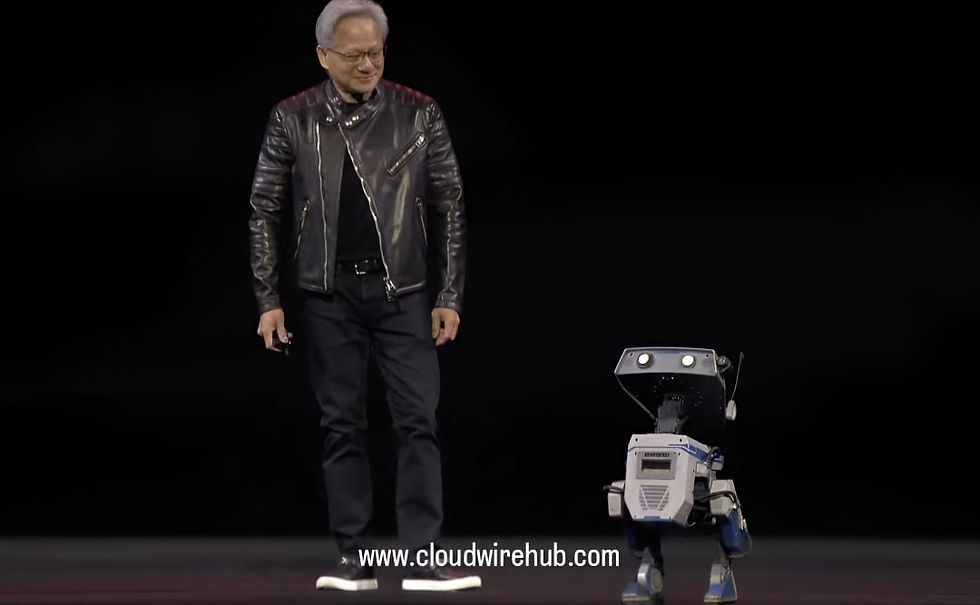The Metaverse 2.0: What's Next for Virtual Worlds in 2025?
- Dhruv Patel
- Jan 16
- 4 min read
Updated: Jan 17
As it stands in 2025, the Metaverse will differ significantly from where we began this journey in earlier, very rudimentary phases. With these enhanced technologies coming together with improved experience and substantial funding from high-level tech organizations, we would find several such areas of progress under the aegis of Metaverse 2.0. A few likely courses it would be taking include:

Much Greater Immersion with Enhanced VR/AR
Mixed Reality: This will probably come with seamless transitions between Virtual Reality (VR) and Augmented Reality (AR) to provide fully immersive virtual environments and augmented overlays of the real world. There will be a hybrid space of the physical and virtual.
Haptic Feedback: Better haptic tech would enable Metaverse users to sense touch, texture, temperature, and all such sensations making it much more real.
Improved Headsets and Wearables: Expect headsets to be lighter, more comfortable, and of higher resolution with wider fields of view and possibly wireless. In addition, wearable devices such as gloves or bodysuits will continue to further enhance immersion.
Interoperability Across Platforms
Cross-Platform Experiences: The Metaverse will probably evolve into a more integrated space where assets (avatars, digital real estate, NFTs, etc.) can be used across multiple platforms. This will reduce the fragmentation seen in current virtual worlds, allowing users to carry their virtual identities and belongings seamlessly from one environment to another.
Standardization: As the industry matures, common standards will emerge for digital assets, social interaction, and virtual economies, which will make it easier for developers to create interoperable systems.
AI-Powered Virtual Entities
NPCs: Non-Player Characters: AI advancements will make virtual world feel alive because NPCs will become much more complex, having better behaviors and conversations that will have more emotion to it-a better narrative.
Personal AI Assistants: Users will have their own personal AI assistants that guide them in whatever they need or even personalize the environment according to individual preferences.
Decentralized Economies and Digital Ownership
The concept of blockchain and NFTs: more decentralized virtual economies will probably be powered by blockchain technologies, where users truly own the assets they create or purchase. This can range from digital art to virtual land, collectibles, and even real estate. NFTs can become integral parts of this ecosystem, providing verifiable ownership and the ability to buy or sell assets across various virtual worlds.
Digital Currency: There would be large-scale use of cryptocurrencies and digital tokens, thus enabling faster, secure, and borderless purchases within the worlds. These could easily match up with the financial systems in size.
New Social Dynamics
Virtual Socialization: Social life in the Metaverse will develop more complexity since avatars here will be smarter and able to express a far wider range of emotions and actions. These can lead to better, more productive interactions between individuals.
Work and Collaboration: Virtual offices and collaborative spaces would become mainstream. The Metaverse could be used as a leading venue for working remotely, in which virtual meetings, brainstorming sessions, and workshops are fully immersive.
Entertainment and Events: Concerts, conferences, sports events, and theater performances will take place in the Metaverse. Attendees will have an enhanced experience, such as interactive elements or live participation from anywhere in the world.
Enhanced User-Generated Content (UGC)
Creative Tools: With the power of AI and intuitive design software, end users will have the ability to create content without any coding skills at all. That will democratize content creation leading to a deluge of user-generated worlds, assets, and experiences.
Co-Creation: Platforms could allow for collaborative creation tools where people work together in real time building environments, games, and interactive experiences.
Ethics, Privacy, and Security Concerns
Digital Identity Protection: Protecting digital identities and preventing fraud, harassment, or abuse in virtual environments will be critical. We may see new tools and laws to safeguard users.
Mental Health: The more time people spend in virtual worlds, the more there is a concern over the psychological impact of spending too much time in virtual worlds. Balancing real life and digital life will become an important focus for both users and developers.
Advanced AI and Procedural Content Generation
Dynamic Worlds: AI-driven systems can make virtual worlds evolve and adapt dynamically. For instance, environments, quests, and interactions may change with the behavior and decisions of the user, thereby creating a more personalized and evolving experience.
Adaptive AI Narratives: Storytelling in the Metaverse will become more interactive, where AI will create personalized narratives that evolve based on the actions and decisions of the user in virtual worlds.
Virtual Education and Training
Immersive Learning: Education will be one of the most prominent use cases for the Metaverse, as students can attend classes in fully immersive 3D environments, participate in hands-on simulations, and interact with virtual instructors.
Skill Development: Professional training programs, such as medical simulations, engineering practices, or complex problem-solving exercises, will move to the Metaverse, offering highly interactive and realistic scenarios.
Expanding Access and Inclusivity
Accessibility: In the Metaverse, there would be greater access to people with disabilities, by inclusion of mobility aids, tools of communication and interaction for diverse needs.
Global Access: Due to lower costs and improved accessibility, virtual worlds may offer global access to socio-economically diverse populations from different parts of the world in global events, education, and work.
Conclusion
By 2025, the Metaverse 2.0 will be a much more integrated and immersive experience. Advances in hardware, software, AI, and blockchain will combine to deliver highly personalized, social, and interactive digital spaces for entertainment, work, education, or socialization. The Metaverse will probably be a crucial part of life, offering new ways to connect, create, and explore. However, as these worlds expand, the balance between technological innovation, privacy, and regulation will remain a key challenge.



Comentarios